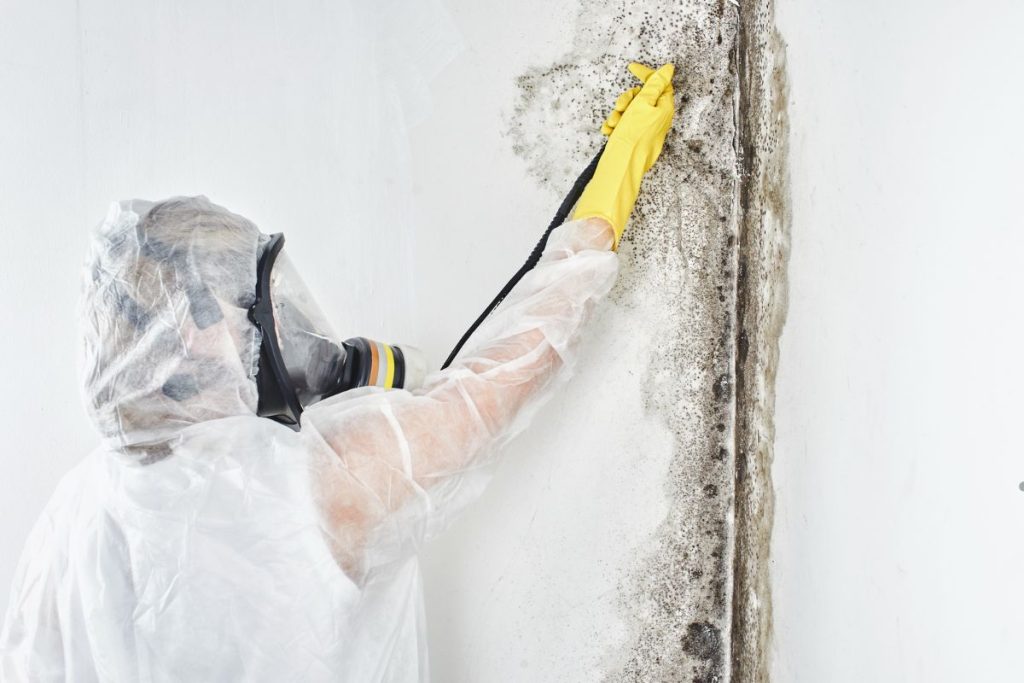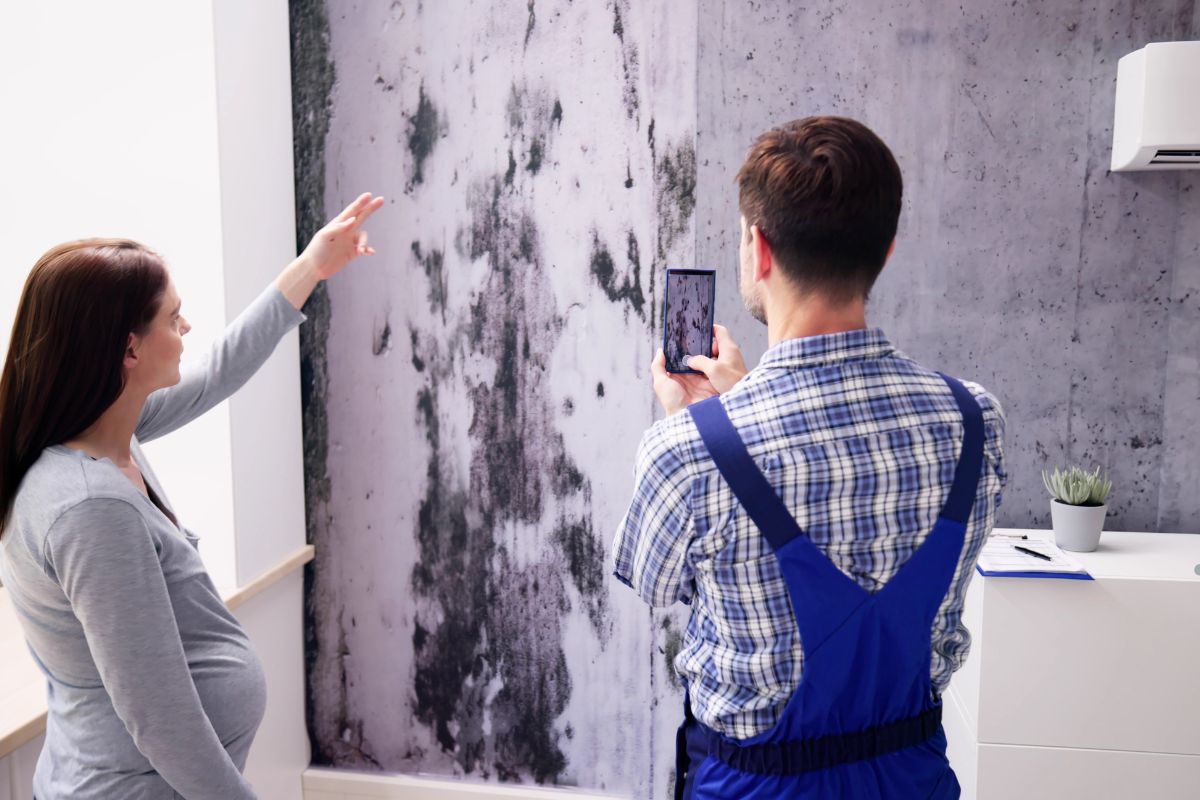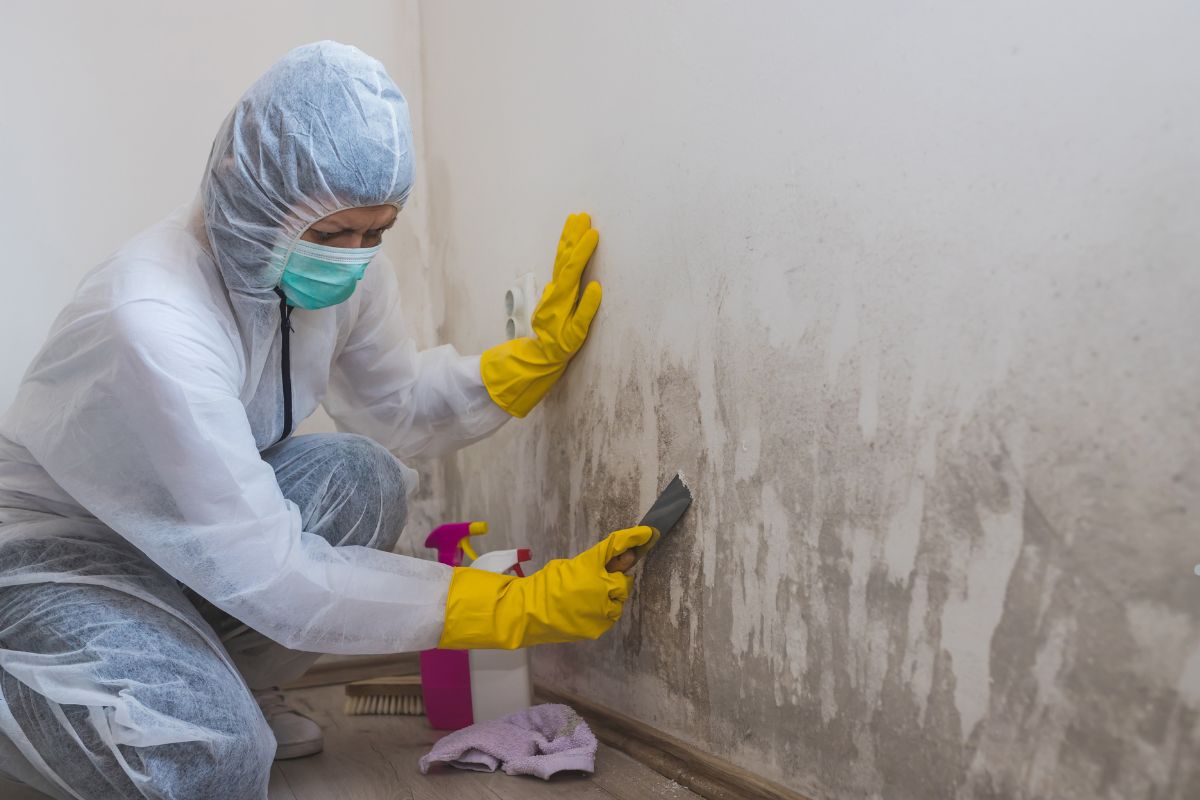
The short answer is yes, mold can be removed from your HVAC system, but it’s often a job best left to professionals. Mold in your heating, ventilation, and air conditioning (HVAC) system can pose serious health risks and damage your equipment. This comprehensive guide will walk you through everything you need to know about identifying, addressing, and preventing mold growth in your HVAC, ensuring a healthy and comfortable home environment.
1. Why Mold Grows in HVAC Systems
Mold thrives in dark, damp environments, and unfortunately, HVAC systems can provide the perfect breeding ground.
- Understanding the Ideal Conditions: Mold needs moisture, a food source (like dust and organic material), and a stable temperature to flourish.
- Common Causes of Mold in HVAC:
- Humidity: High humidity levels, especially during humid summers, create a moist environment inside ductwork and AC units.
- Condensation: Temperature differences can cause condensation to form on coils and inside ductwork.
- Poor Ventilation: Inadequate airflow can trap moisture and prevent it from drying out.
- Leaks: Water leaks from roofs, plumbing, or the HVAC system itself can introduce moisture.
- Dirty Air Filters: Clogged air filters reduce airflow and allow dust and debris (mold food) to accumulate.
We take pride in offering top-quality mold removal and remediation solutions tailored to your needs. Explore our services to learn more about how we can help keep your home or business safe and mold-free.
2. Identifying Mold in Your HVAC System
Early detection is key to preventing significant mold problems. Here are some signs to look for:
- Visual Signs of Mold: Look for visible mold growth on air vents, coils, drain pans, and inside ductwork (if accessible). Mold can appear in various colors, including black, green, white, or brown.
- Musty Odors: A persistent, musty smell coming from your vents is a strong indicator of mold.
- Health Symptoms Related to Mold Exposure: Mold can trigger allergic reactions, respiratory problems, and other health issues. Common symptoms include:
- Coughing and sneezing
- Runny nose and sinus congestion
- Eye irritation
- Skin rashes
- Headaches
- Difficulty breathing
3. Dangers of Mold in HVAC Systems
Mold is more than just an unsightly nuisance; it can have serious consequences.
- Health Risks: As mentioned above, mold exposure can trigger a range of health problems, especially for people with allergies, asthma, or weakened immune systems.
- System Damage: Mold can corrode HVAC components, leading to reduced efficiency, costly repairs, and even premature system failure.
- Indoor Air Quality Concerns: Mold spores released into the air contaminate your indoor environment, impacting the overall air quality and potentially affecting the health of everyone in your home.

4. Can Mold Be Removed from HVAC Systems?
Yes, mold can be removed, but the approach depends on the severity of the problem.
- Professional Mold Remediation: For significant mold infestations, professional remediation is highly recommended. They have the expertise, equipment, and safety gear to remove mold safely and effectively.
- DIY Mold Removal Attempts: While DIY methods might seem appealing, they often fall short. DIY cleaning may not completely eradicate the mold, and improper techniques can spread spores and worsen the problem.
Call us for a consultation to determine the best course of action for your HVAC mold issue. We’ll assess the situation and provide a tailored solution.
5. Professional Mold Remediation Process
A professional mold remediation company follows a specific process to ensure thorough and safe mold removal.
- Inspection and Assessment: A qualified technician will inspect your HVAC system to identify the extent of the mold growth and determine the source of the moisture.
- Containment: The affected area is sealed off to prevent mold spores from spreading to other parts of your home.
- Cleaning and Disinfection: Mold is removed using specialized equipment and EPA-approved antimicrobial solutions. Affected surfaces are thoroughly cleaned and disinfected.
- Post-Remediation Verification: After the cleaning, the technician will verify that the mold has been successfully removed and that air quality has returned to acceptable levels.
6. DIY Mold Removal: Is It Safe & Effective?
DIY mold removal can be tempting to save money, but it’s important to understand the risks and limitations.
- When DIY Might Be an Option: DIY removal might be suitable for very small, surface-level mold growth in easily accessible areas.
- Essential Safety Precautions: If attempting DIY removal, always wear protective gear, including gloves, a mask (N-95 or higher), and eye protection. Ensure proper ventilation.
- Limitations of DIY Mold Removal: DIY methods often fail to address the root cause of the moisture problem, leading to recurring mold growth. They also may not be effective at removing mold from porous surfaces.
7. Preventing Mold Growth in Your HVAC System
Prevention is always better than cure! Here are some steps you can take to prevent mold growth:
- Regular HVAC Maintenance: Schedule regular maintenance with a qualified HVAC technician to ensure your system is clean, properly functioning, and free of leaks.
- Controlling Humidity: Use a dehumidifier, especially in damp basements or during humid months, to maintain humidity levels below 60%.
- Improving Ventilation: Ensure adequate ventilation throughout your home to prevent moisture buildup. Use exhaust fans in bathrooms and kitchens.
- Change Air Filters Regularly: Replace your air filters every 1-3 months, or more often if you have pets or allergies.
- Address Leaks Promptly: Repair any leaks in your roof, plumbing, or HVAC system immediately.
Call us for a free quote and to learn more about our HVAC mold remediation services. We’re committed to providing honest, reliable, and effective solutions.

8. Choosing a Mold Remediation Company
If you decide to hire a professional, it’s crucial to choose a qualified and reputable company.
- Credentials and Certifications: Look for companies that are licensed and certified by reputable organizations (e.g., IICRC, NADCA).
- Experience and Reputation: Choose a company with a proven track record and positive customer reviews.
- Transparent Pricing and Communication: Get a detailed estimate in writing and ensure the company communicates clearly throughout the remediation process.
Conclusion
Mold in your HVAC system is a serious issue that can impact your health and the integrity of your home. While DIY solutions might seem tempting, professional mold remediation is often the safest and most effective way to address significant infestations. By understanding the causes, dangers, and prevention methods, you can protect your home and family from the harmful effects of mold.
Protect your home from harmful mold with our expert mold removal services. We ensure a safe, mold-free environment with fast and effective solutions. Contact us today for a free inspection and breathe easier!
